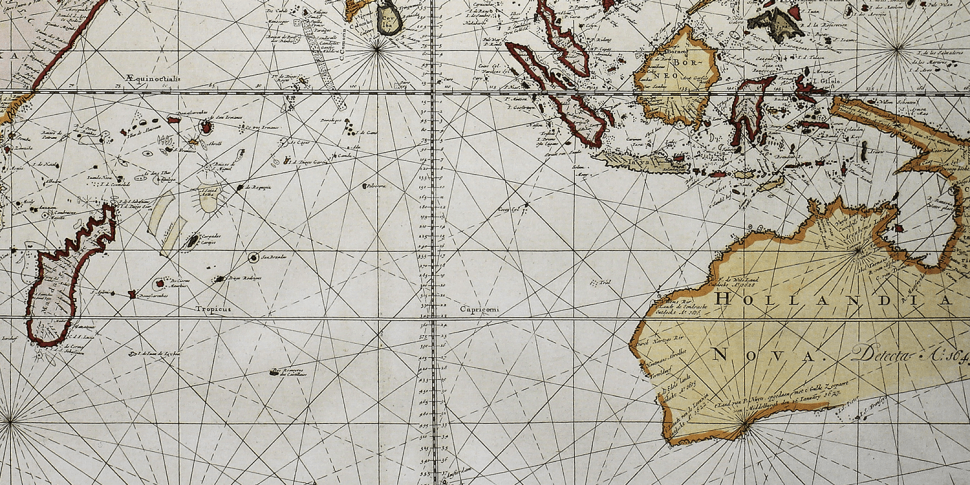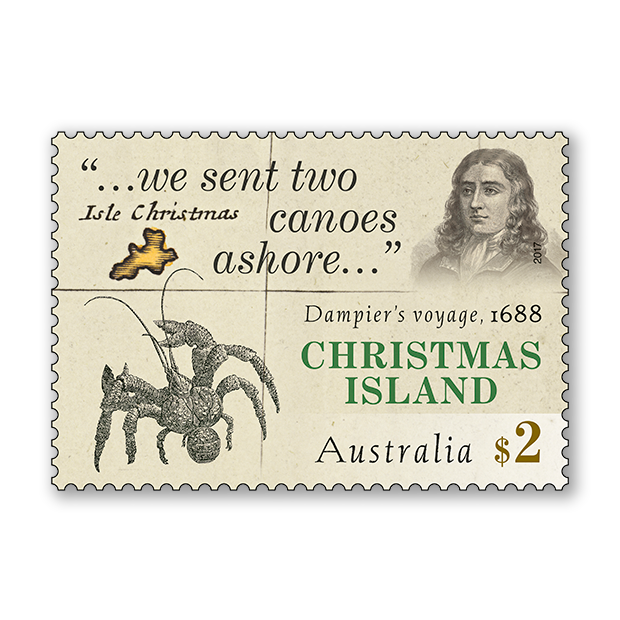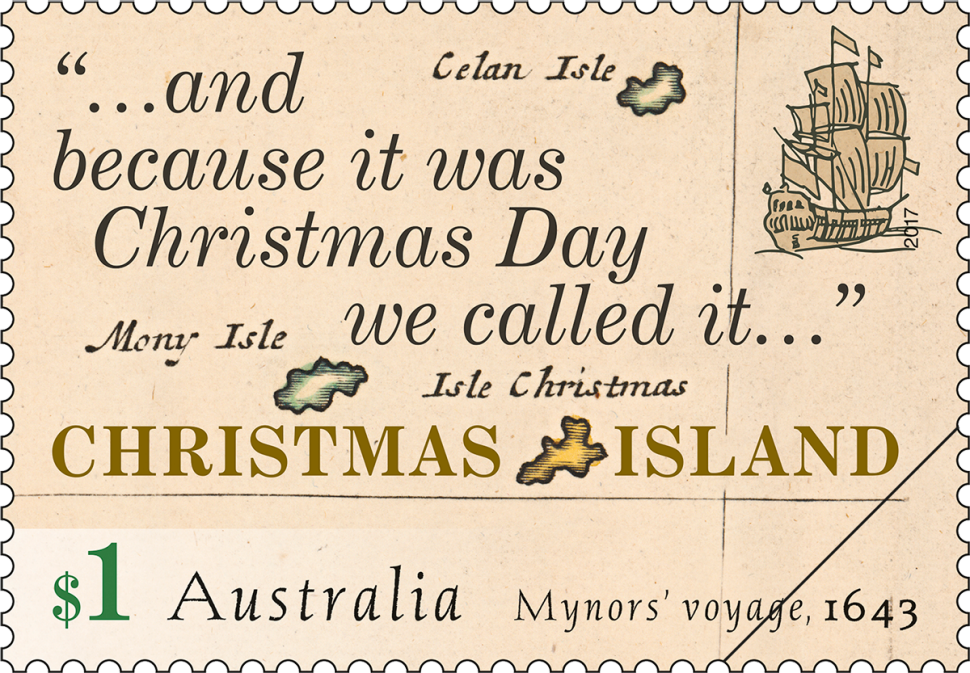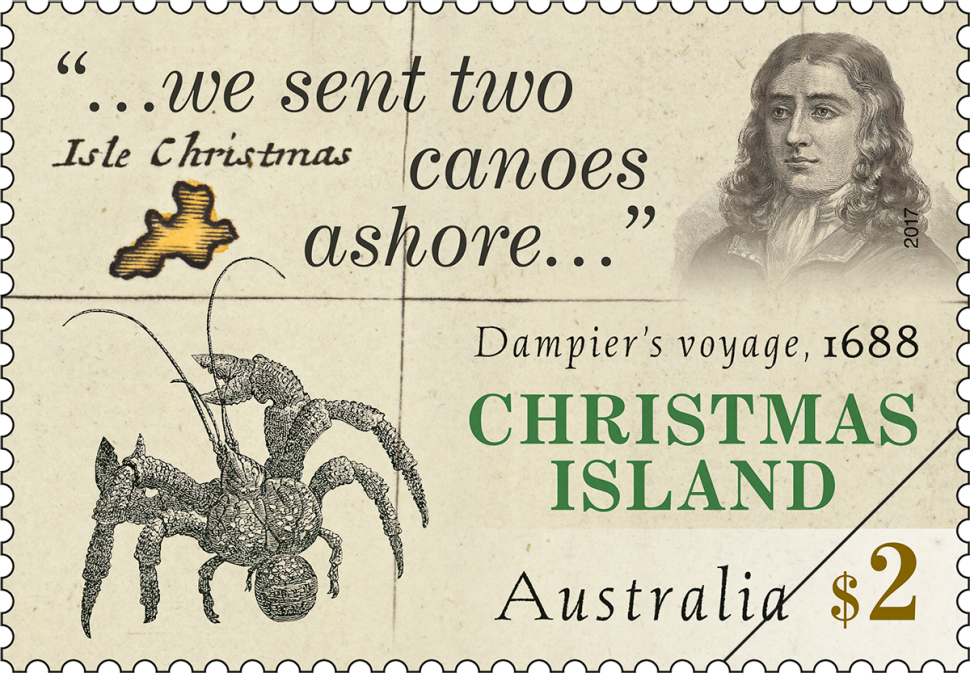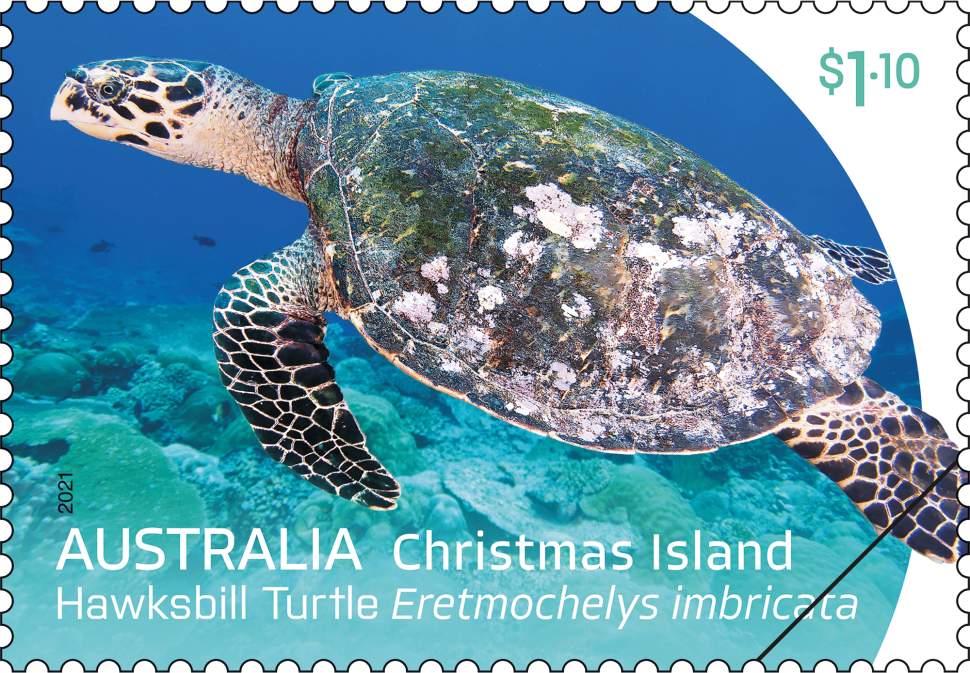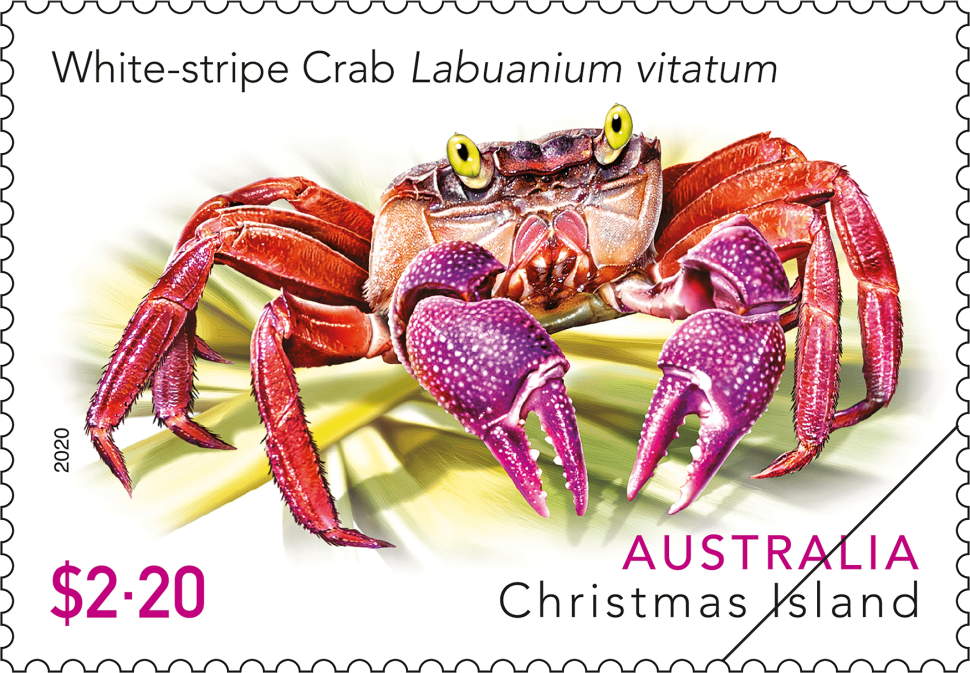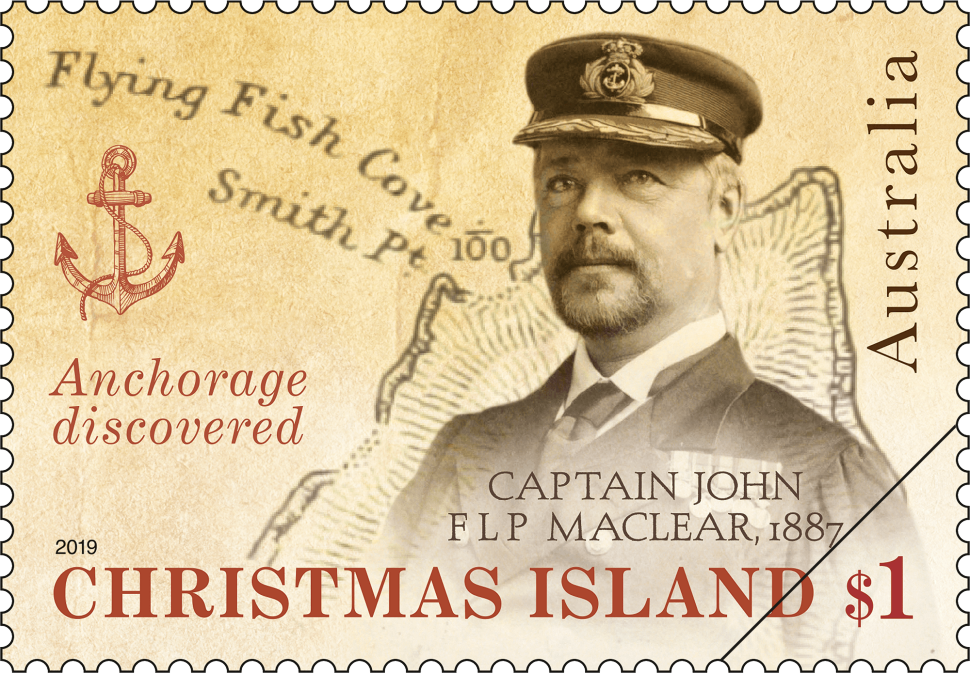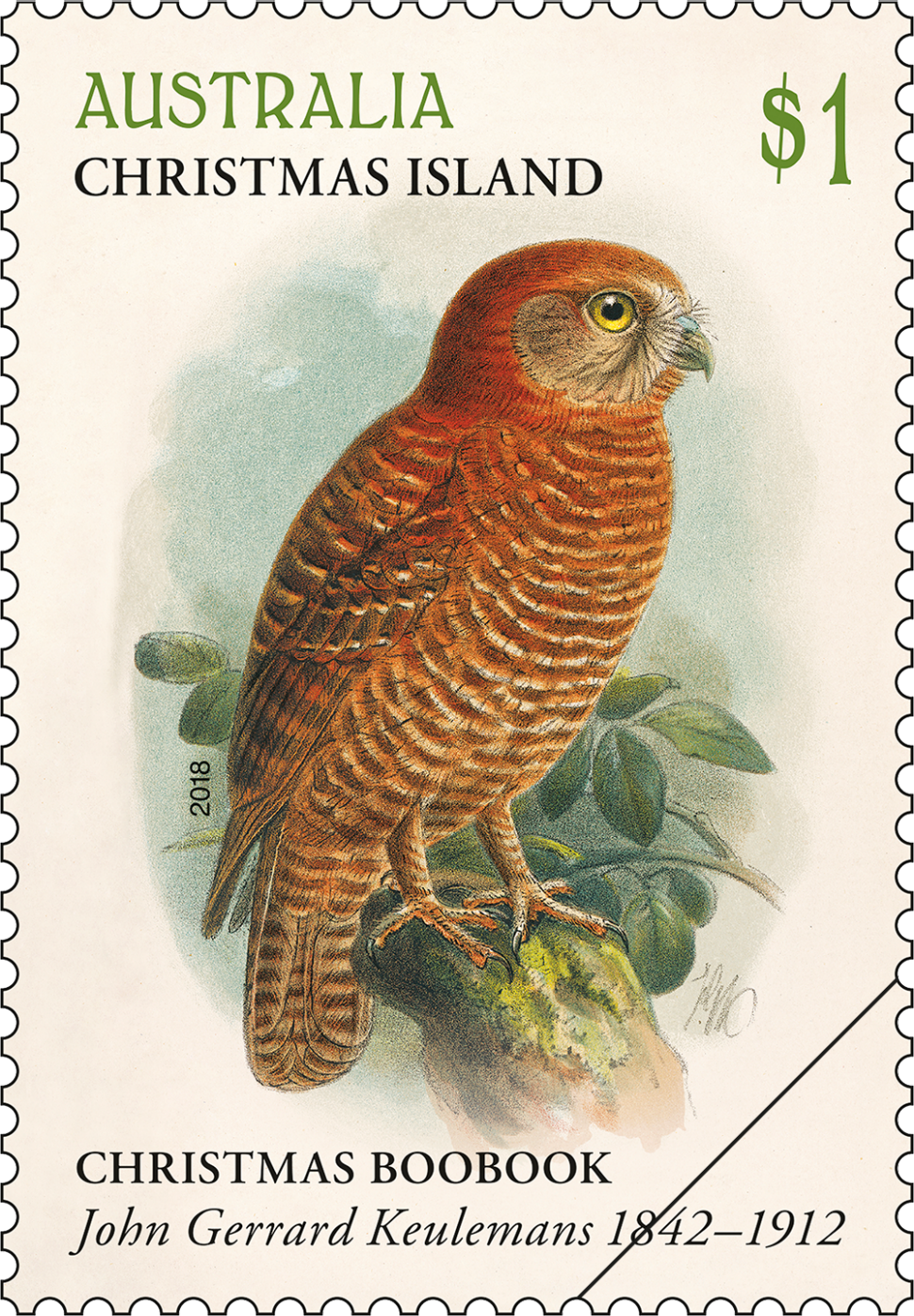The first recorded sighting of Christmas Island occurred in 1615, by Richard Rowe, master of the Thomas. This stamp issue looks at two other significant early voyages in the early history of Christmas Island.
The first involves Captain William Mynors, who sailed past in 1643 and named the island “Christmas Island”. The second is the voyage of William Dampier (and Captain Charles Swan) aboard the Cygnet, which resulted in the first recorded visit ashore, in 1688.
The stamp design combines an historical map with illustration and typography, to evoke the story and era of each voyage.
Products released in this issue
- Minisheet
- First day cover (blank, gummed, minisheet)
- Gutter strips of 10
Technical specifications
- Issue date
- 15 August 2017
- Issue withdrawal date
- 31 March 2018
- Denominations
- 1 x $1, 1 x $2
- Stamp design
- Sonia Young, Australia Post Design Studio
- Product design
- Sonia Young, Australia Post Design Studio
- Printer
- EGOtrade
- Paper - gummed
- Tullis Russell Red Phos
- Printing process
- Offset lithography
- Stamp size
- 37.5mm x 26mm
- Minisheet size
- 160mm x 80mm
- Perforations
- 13.86 x 14.6
- Sheet layout
- Module of 50
- FDI postmark
- Christmas Island WA 6798
- FDI withdrawal date
- 13 September 2017
In 1643, while on board the East India ship Mary (also known as Royal Mary and Mary Royal), Captain William Mynors (also known as “Minors”) sailed past what he later described, in a letter to the East India Shipping Company, as a “fine smooth island”. The ship’s anonymous log tells of a sighting at 3am on 25 December and states, “… because it was Christmas Day we called it by the name of Christmas Iland [sic]”.
The first map to appear with “Christmas I” was by John Sellers, published in 1671. However, it was not until the after the mid-19th century that “Christmas Island” became the established name, in part because the British has taken possession of the island by that point. Many early maps mistakenly depicted more than one island and used various names, including variations of “Moni/Monij” and “Selam”. Indeed, this can be seen on the map used on the stamps, from circa 1707, by Joachim Ottens. Ottens has listed three islands instead of one, naming one “Isle Christmas” and the others “Celan” and “Mony”.
Read our interview with Dr Jan Tent about the possible meanings of the island’s early names.
In 1688, the Cygnet (captained by Charles Swan and with explorer and navigator William Dampier on board), sailed close to Christmas Island. Dampier recorded his impressions in his famous tome, A New Voyage Round the World (1697), describing Christmas Island as “small” and “woody”, with “trees of divers sorts” and being “… of a good height, with steep cliffs … and a sandy bay … but very deep water steep to the shore”.
The Cygnet couldn’t anchor because of deep water, but two canoes were sent ashore for a few hours. The crew returned with wood to repair the ship’s broken pump, as well as birds and enormous crabs to eat. Dampier was quite taken with the size of the crabs, describing them as “…a sort of land animal somewhat resembling a large crawfish without its great claws” and that “…their shells were of a dark brown but red when boiled”.
This content was produced at the time of the stamp issue release date and will not be updated.
